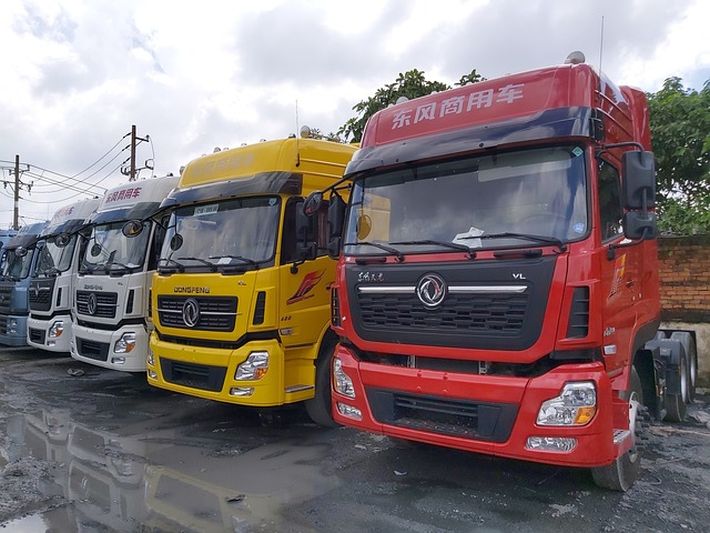Mastering Fleet Management: Expert Tips for Success
Efficient fleet management is crucial for businesses that rely on a fleet of vehicles to deliver goods, provide services, or transport employees. A well-managed fleet can improve productivity, reduce costs, enhance safety, and ensure smooth operations. This article will delve into expert tips for mastering fleet management. From effective vehicle maintenance and driver management to leveraging technology and optimizing routes, these strategies will help businesses succeed in fleet management. By implementing these expert tips, companies can streamline their operations, increase efficiency, and ultimately maximize the value of their fleet.

Leverage Technology and Fleet Management Software
Embrace technology to streamline fleet management processes. Utilize fleet management software that offers GPS tracking, vehicle diagnostics, and performance monitoring features. These tools, which often come in semi truck dash cameras, provide real-time visibility into vehicle location, fuel consumption, driver behavior, and maintenance needs. Leverage telematics data to optimize routing, reduce idle time, and track driver performance. Implement electronic record-keeping systems to streamline paperwork and improve data accuracy. By harnessing technology, businesses can make data-driven decisions, enhance efficiency, and improve fleet performance.
Prioritize Preventive Vehicle Maintenance
Regular and proactive vehicle maintenance is critical for fleet performance. Create a maintenance schedule that includes routine inspections, fluid checks, tire rotations, and necessary repairs. Implement a preventive maintenance program to address issues before they become major problems. Keep detailed records of maintenance activities, track service history, and schedule maintenance based on mileage or time intervals. Businesses can reduce unexpected breakdowns, extend vehicle lifespan, and optimize fleet performance by prioritizing preventive maintenance.
Optimize Routing and Dispatching
Efficient route planning and dispatching are crucial for fleet optimization. Use route optimization software or GPS-based systems to determine the most efficient routes based on traffic conditions, distance, and customer locations. Consolidate deliveries or service calls to minimize unnecessary trips. Implement real-time tracking and communication systems to optimize dispatching and promptly respond to changes or emergencies. Businesses can reduce fuel consumption, improve on-time performance, and enhance customer satisfaction by optimizing routing and dispatching.
Integrate Driver Management and Training
Effective driver management is essential for fleet success. Implement training programs to enhance driving skills, promote safe practices, and improve fuel efficiency. Focus on defensive driving techniques, eco-driving methods, and adherence to traffic regulations. Conduct regular performance evaluations, provide feedback, and recognize exemplary drivers. Develop driver incentive programs that reward safe driving habits and fuel-efficient behaviors. Businesses can minimize accidents, reduce fuel costs, and improve fleet efficiency by investing in driver training and management. By investing in driver training programs and implementing driver coaching based on performance data, businesses can reduce accidents, insurance costs, and vehicle repairs while ensuring the well-being of their drivers.
Develop a Comprehensive Fleet Management Strategy
To excel in fleet management, businesses need a well-defined strategy. Start by identifying your fleet’s goals, such as reducing fuel consumption, minimizing downtime, improving driver safety, or optimizing routing efficiency. Define key performance indicators (KPIs) to measure progress towards these goals. Develop a roadmap that outlines the steps to be taken, the resources required, and the timeline for implementation. A comprehensive strategy will provide a clear direction and help align fleet operations with the business’s overall objectives.
Monitor and Analyze Key Performance Indicators
Regularly monitor and analyze key performance indicators (KPIs) to gauge the effectiveness of fleet operations. Identify relevant metrics such as fuel consumption, maintenance costs, vehicle utilization, driver safety, and customer satisfaction. Set specific targets for each KPI and track performance regularly. Analyze data to identify areas for improvement, trends, and potential cost-saving opportunities. By monitoring KPIs, businesses can identify operational inefficiencies, implement corrective measures, and drive continuous improvement.
Additionally, tracking and analyzing KPIs allow fleet managers to make data-driven decisions. For example, by monitoring fuel consumption, managers can identify vehicles with excessive fuel usage and take corrective actions such as providing additional driver training or addressing maintenance issues. This not only helps reduce fuel costs but also contributes to environmental sustainability. Maintenance costs are another important KPI to monitor. By analyzing maintenance data, fleet managers can identify patterns or recurring issues that may indicate the need for adjustments in preventive maintenance schedules or improvements in vehicle selection. Timely maintenance can prevent breakdowns, minimize downtime, and prolong the lifespan of fleet vehicles, ultimately saving costs.

Mastering fleet management is a complex task requiring strategic planning, efficient operations, and continuous improvement. By mastering fleet management, businesses can maximize the value of their fleet, increase efficiency, and gain a competitive edge in their industry. With careful planning, proactive measures, and a focus on continuous improvement, businesses can successfully navigate fleet management challenges and achieve long-term success.
